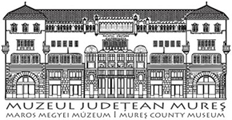Marisia - Maros Megyei Múzeum Évkönyve 33/4. (2013)
Articles
Dendrokronológiai vizsgálatok a marosvásárhelyi vártemplomban 315 Soós 2010 Soós Zoltán, Vártemplom, Marosvásárhely, http:// lexikon.adatbank.ro/muemlek. php?id=260 BOTÁR István Csíki Székely Múzeum, Csíkszereda, RO Erdélyi Dendrokronológiai Laboratórium, Csíkszereda, RO GRYNAEUS András Magyar Dendrokronológiai Laboratórium, Budapest, HU Summary The Reformed church localized inside the castle of Tárgu Mure§ (Marosvásárhely) belonged in the Middle Ages to the Franciscan-order. Despite of destructions and renovations of the last centuries the church preserved more wood structures which chronological relations could bring important information about the periods of the building. The most appropriate method for such research is the dendrochronology which in optimal circumstances can result dating with half year accuracy. For the analysis we took 65 samples in all. In the bell tower there are no wood elements contemporary with the construction, the inside structures belong all to the renovation made after the devastation of 1601-1602, some are even younger. The roof of the tower and the beams of the old bell-structure were made from oak-timber cut in 1603, while the actual bell-structure is made from oaks felled in the winter of 1834-1835. Unlike the tower and the nave the roof structure of the sanctuary contains elements from a much earlier roof. Four complete trusses on the east side and the elements in the centre and south part of the structure were made from oaks cut during the winter of 1479/1480 and the next summer. One has to presume a bigger intervention, construction on the friary for this period. The devastations from the beginning of the 17* century had strong effects on the north-west part of the roof positioned near the bell tower, there fore the rafters located here and also the connected tie-beams were replaced with wood material cut in winter of 1602/1603. Surprisingly the assembly marks used on the 17th century elements are almost the exact copies of those dated in the 15th century. The following major intervention on the roof was in the 20th century, when every second secondary truss was strengthened with a pine structure. The main importance of the dendrochronological research is the identification of a historical structure in the heart of Transylvania on a well-known building, and the exact dating of the construction and reconstruction years. Székely Oklevéltár VI. Székely Oklevéltár VI. szerk.: Szádeczky Lajos (Kolozsvár 1897) TÓTH Boglárka Szegedi Tudományegyetem, ВТК, Régész Tanszék, Szeged, HU Erdélyi Dendrokronológiai Laboratórium, Csíkszereda, RO WALGRAFFE, Denis Csíkborzsova, RO Rezumat In evul mediu biserica reformats din cetatea din Tárgu Mures (Marosvásárhely) a fost lácasul franciscanilor. ín ciuda distrugerilor si reconstrucjiilor din secolele anterioare cladirea incä pästreazä mai multe structuri si demente de lemn a cäror datare este foarte importantä pentru istoria bisericii. Metoda cea mai potrivitä pentru astfei de datäri este dendrocronologia, care in circumstance optime poate sä producä datäri cu о precizie de jumätate de an. In cursul prelevärilor am luat in total 65 de probe dendrocronologice. Datoritä devastärilor vechi in cazul turnului cercetarea dendrocronologicä nu a identificat elemente contemporane cu constructia clädirii. Elementele cercetate pot fi legate de lucrärile de reconstruct efectuate dupä incendierile din 1601-1602, sau sunt elemente chiar mai noi. Grinzile folosite pentru acoperisul turnului, respectiv cele de la nivelul de bazä a clopotelor vechi provin din stejari täiafi in anul 1603, iar grinzile din structura clopotelor actuale apar(in unor stejari doborä(i in iarna anilor 1834/1835. Spre deosebire de navä si turn acoperisul corului poate fi legat de perioade de constructi mult mai timpurii. Cele patru ferme estice, respectiv majoritatea elementelor din partea centralä si sudicä a structurii au fost executafi din copaci de stejar täia(i in iarna anilor 1479/1480 respectiv vara anului 1480. Prin urmare se poate constata cä in acesti ani a avut loc о mare intervenfie/construcfie la biserica franciscanä. Devastarea si incendiile de la inceputul secolului la 17-lea au produs ravagii si pe sarpanta corului, majoritatea cäpriorilor vestice de pe partea nordicä de längä turn, si elementele legate de acestea, mai ales coardele au fost schimbate cu grinzi din stejar täia(i in iarna anilor 1602/1603. Este extrem de interesant cä in cursul acestei renoväri dulgherii au copiat semnele folosite de mesterii din secolul al 15-lea. О nouä intervenjie majorä s-а derulat in secolul al 20-lea, cänd fiecare a doua fermä secundarä a fost intäritä cu о structurä din molid. Succesul cercetärii dendrocronologice constä in faptul cä a localizat in inima Transilvaniei pe о clädire usor accesibilä о sarpantä medievalä necunoscutä anterior, in cazul cäreia s-а reusit atät datarea absolutä a construcfiei cat si fixarea cronologicä a reparafiilor medievale.
